Do you have a question about the Bosch Climate 5000 MS 18 and is the answer not in the manual?
Details on optional accessories for remote controls, including wired and wireless options.
Emphasizes the importance of reading safety precautions before commencing installation to prevent damage or injury.
Provides a step-by-step visual guide to the installation process, from outdoor unit setup to test runs.
Detailed instructions for selecting the optimal location for the outdoor unit, considering ventilation and clearance.
Provides dimensions and mounting specifications for various split-type outdoor units.
Guides the installation of the drain joint, ensuring proper water drainage from the outdoor unit.
Provides instructions and precautions for drilling wall holes for refrigerant pipes and signal cables.
Specific instructions for connecting 7.1KW units to the condenser ports A and B.
Instructions for connecting refrigerant pipes, emphasizing proper cutting, flaring, and insulation.
Crucial safety warnings and guidelines for electrical wiring, emphasizing power disconnection and qualified personnel.
Details the fuse specifications for the air conditioner's circuit board for overcurrent protection.
Step-by-step guide for wiring the outdoor unit, including cable selection and connection to terminals.
Illustrates various wiring diagrams for connecting indoor and outdoor units for different model configurations.
Detailed procedure for evacuating the air conditioning system using a manifold gauge and vacuum pump.
Provides crucial cautions and guidelines regarding the safe and correct addition of refrigerant.
Covers electrical safety checks and methods for detecting refrigerant leaks after installation.
Safety checks for the work area, ensuring minimal risk of ignition and proper ventilation.
Guidelines for conducting work in a controlled manner to minimize risks associated with flammable gas.
Instructions for personnel working in the servicing area, emphasizing instruction and avoidance of confined spaces.
Procedure for checking for refrigerant presence using appropriate detectors to ensure a safe atmosphere.
Requirement to have appropriate fire extinguishing equipment available for hot work.
Strict rules against ignition sources during servicing to prevent fire or explosion risks.
Ensuring adequate ventilation in the work area to disperse any released refrigerant safely.
Checks on electrical components and adherence to manufacturer guidelines for flammable refrigerant systems.
Initial safety checks and component inspection for electrical devices during repair and maintenance.
Guidelines for working on sealed components, including electrical isolation and leak detection.
Procedures for repairing intrinsically safe components, ensuring safety in flammable atmospheres.
Checking cabling for wear, corrosion, pressure, vibration, and environmental effects.
Methods for detecting flammable refrigerants, strictly prohibiting naked flames and requiring specialized equipment.
Recommended methods for detecting refrigerant leaks, including electronic detectors and leak detection fluids.
Procedure for safely removing and evacuating refrigerant from the system before repairs.
Additional requirements for charging, including contamination prevention and cylinder handling.
Procedure for safely decommissioning the system, including refrigerant recovery and electrical isolation.
Requirements for labelling decommissioned equipment and identifying flammable refrigerants.
Best practices for safely removing refrigerant, including cylinder handling and equipment standards.
Guidelines for transporting, labelling, and storing units containing flammable refrigerants.
| Brand | Bosch |
|---|---|
| Model | Climate 5000 MS 18 |
| Category | Air Conditioner |
| Language | English |
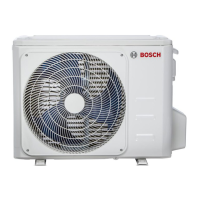
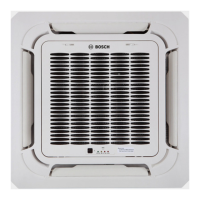
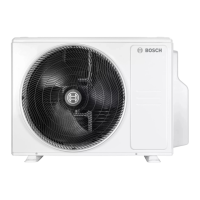

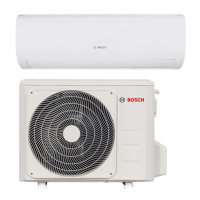





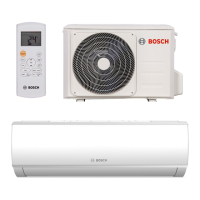

